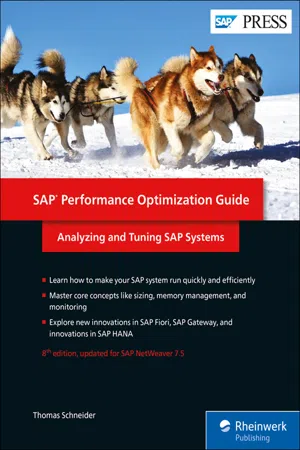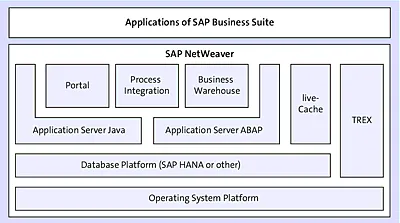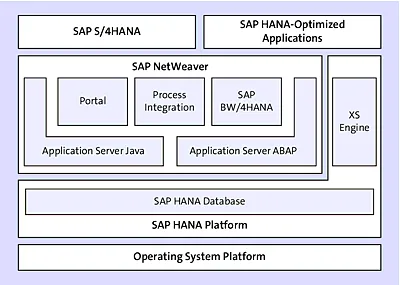
- 892 pages
- English
- ePUB (mobile friendly)
- Available on iOS & Android
About this book
The speed and efficiency of your organization's software is critical for business success. From monitoring system workloads and optimizing SQL statements, to identifying performance problems in ABAP programs and sizing SAP HANA—learn how to make your SAP system is as agile as possible. Update your skills for new technologies like SAP Fiori, SAP Gateway, and SAP NetWeaver 7.5 and keep your SAP system on top with the latest in SAP performance optimization. a. SAP Basis
Get complete coverage of the SAP Basis hardware, database, memory configuration, and work processes to maximize system analysis and tuning, updated for SAP NetWeaver 7.5. b. Analyzing Your System
Hardware, workloads, and databases—develop a holistic understanding of your system architecture for sophisticated optimization. c. Databases and SQL Processing
From SAP Max DB to DB2 to SAP Sybase ASE, find the most important information about database monitoring and optimizing SQL Statements.
Frequently asked questions
- Essential is ideal for learners and professionals who enjoy exploring a wide range of subjects. Access the Essential Library with 800,000+ trusted titles and best-sellers across business, personal growth, and the humanities. Includes unlimited reading time and Standard Read Aloud voice.
- Complete: Perfect for advanced learners and researchers needing full, unrestricted access. Unlock 1.4M+ books across hundreds of subjects, including academic and specialized titles. The Complete Plan also includes advanced features like Premium Read Aloud and Research Assistant.
Please note we cannot support devices running on iOS 13 and Android 7 or earlier. Learn more about using the app.
Information
1 Performance Management of an SAP Solution
[»] When Should You Read This Chapter?
1.1 SAP Solution Architecture
1.1.1 SAP Solutions and SAP Components


- SAP NetWeaver Application Server ABAP (SAP NetWeaver AS ABAP) development and runtime environment (this is the successor to the SAP Basis that you know from SAP R/3 and contains the Development Workbench and the basic tools such as the Computing Center Management System [CCMS])
- SAP NetWeaver Application Server Java (SAP NetWeaver AS Java) development and runtime environment (formerly known as SAP J2EE Engine)
- Database and operating system platform
- SAP liveCache
- SAP Business Warehouse (SAP BW)
- SAP Process Integration (SAP PI)
- SAP Business Process Management (BPM)
- SAP Enterprise Portal
- SAP NetWeaver Enterprise Search with TREX

1.1.2 Application Scenarios for SAP HANA
- SAP Business Warehouse (SAP BW) on SAP HANA and SAP BW/4HANA
When using SAP HANA as your database for SAP BW, you can benefit from the performance advantages of SAP BW. SAP BW queries on InfoCubes and DataStore Objects (DSOs) are processed directly by the SAP HANA database; numerous administrative tasks for index and aggregate maintenance are no longer required. There is no need for a separate SAP...
Table of contents
- Dear Reader
- Notes on Usage
- Table of Contents
- Preface and Acknowledgements
- Introduction
- 1 Performance Management of an SAP Solution
- 2 Analysis of Hardware, Database, and ABAP Application Server
- 3 Workload Analysis
- 4 Hardware Sizing and Component Distribution
- 5 Optimization of ABAP Programs
- 6 Memory Management
- 7 Load Distribution, Remote Function Calls, and SAP GUI
- 8 Internet Connection and SAP Fiori
- 9 Optimizing Java Programs
- 10 Locks
- 11 Optimizing SQL Statements
- 12 SAP Buffering
- 13 Optimizing Database Queries with SAP HANA
- 14 Optimizing Queries in SAP Business Warehouse
- A Database Monitors
- B Important Transaction Codes
- C Review Questions and Answers
- D Glossary
- E Information Sources
- F The Author
- Index
- Service Pages
- Legal Notes